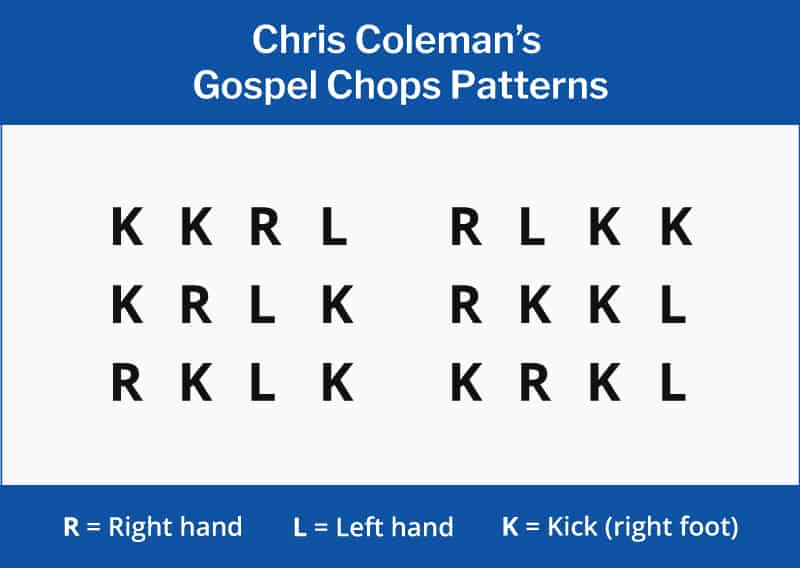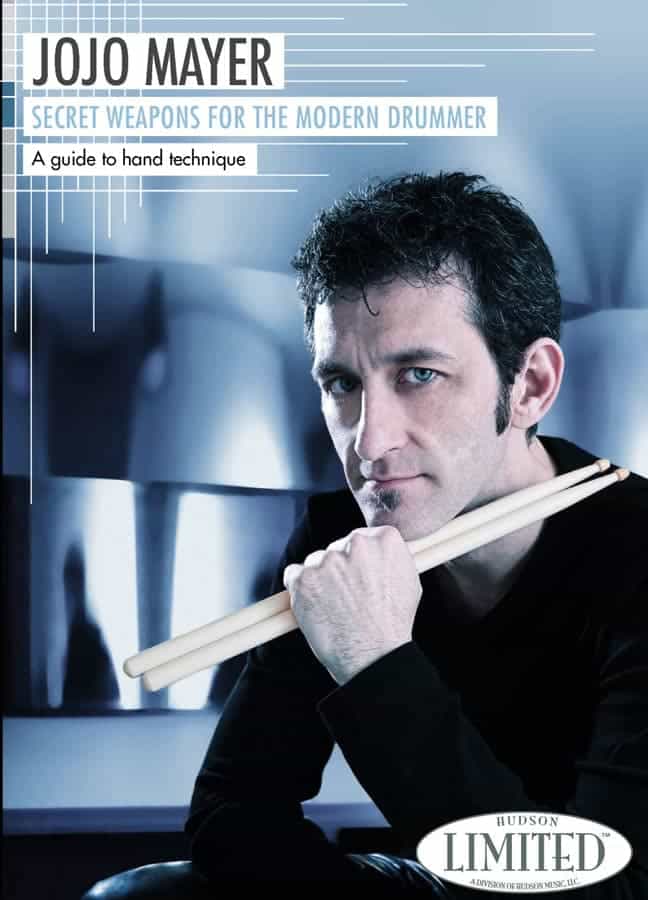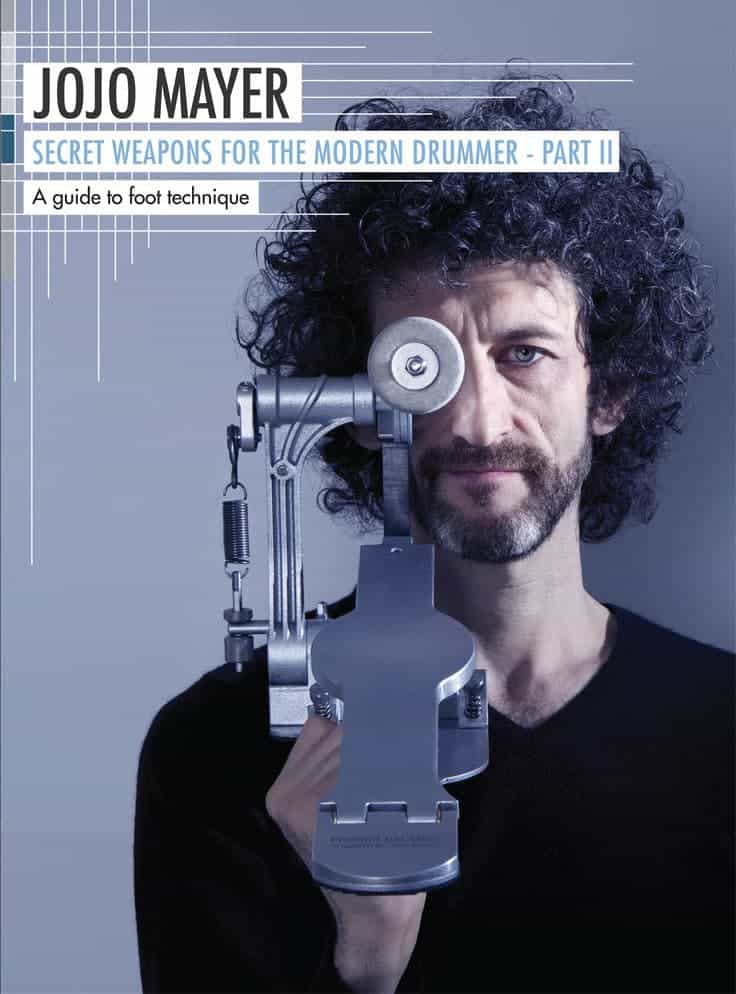Drum chops describe a drummer’s technical ability to play the drums. A player that has great chops has a lot of freedom over how they express themselves. They can play very fast, very precisely and with great variety. To achieve this, they have developed a mastery of drum technique and vocabulary.
Picture the moment in a gig when the drummer plays a drum solo or begins a thunderous drum fill.

To sound at their best, the drummer will need a range of exciting musical ideas that will engage the listener.
Then, they must also have the technical ability to bring those ideas to life.
These two elements are what chops are all about.
- Who has the best drum chops?
- Drummers with amazing chops
- What are gospel chops?
- How to improve your drum chops
If there’s a particular part of the article you are most interested in, you can find your way there using the blue links above.
So who has the best drum chops?
While it’s possible to assess players based on their technical ability, there’s no one right answer to this question.
No drummer is thought to be absolutely the best, but there are names that come up again and again in terms of technical ability.
To get you inspired to practise your own chops, we’re going to take a look at some of the best drummers in the business.
Drummers with amazing chops
Ever wanted to play a drum roll with one hand? Or play a bass drum with a single foot so fast that it sounds like you are using two pedals?
A little later on, we’ll explore how to bring these techniques to life, from the simplest to the most difficult, but for now, check out this astonishing drum solo from Chris Dave.
Not only does he have an incredible mastery of these techniques, he’s able to play other highly musical ideas over the top, showing incredible independence.
TIP: Whatever you play, make sure that you choose it because you like how it sounds, not just because it is difficult to play. At the end of the day, we want the audience to appreciate every single note!
Next up, we have a solo of rudimental, musical and chop brilliance from the one and only Jojo Mayer.
We’ll be covering Jojo and his incredible dedication to drum technique a bit further on in the article, but first, let’s have a look at one of his famous recordings.
He uses simple drum rudiments like flams, single strokes and double stroke rolls to create a wide variety of chops, which he then unleashes in this explosive solo.
Of course, drum chops aren’t just limited to drum solos or parts of the music where the drums are the main focus.
Vinnie Colaiuta is a master of producing great drum fills (with amazing chops) that crucially don’t interfere with the rest of the music.
Your drum chops should never overshadow the other musicians you are playing with, but help support their playing and take the whole band to another level.
Check out Vinnie laying down a rhythm track with renowned bass player Nathan East.
If you want to hear what this section sounded like with every instrument on top, here’s the full mixed version from Lari Basilio.
Who’s your favourite drummer with great chops? We’d love to hear your thoughts in the comments below.
What are gospel chops?
A particular genre of drum chops that have become very popular in recent years are gospel chops.
So, what are gospel chops?
Gospel chops was originally a website featuring lessons from notable musicians in the gospel genre. As the drummers from the site became increasingly popular, the meaning changed to describe a unique style of drumming used in church that drummers had developed while getting together and practising.
Legendary gospel drummer Chris Coleman says that there are six basic patterns that make up the essence of his interpretation of gospel chops.

While the definition of gospel chops is far from set in stone, here are some facts about Chris’s particular approach to playing them:
- All these examples are linear patterns (no two drums are played at the same time).
- The fills are just basic patterns, but the speed, smoothness and unique choices of drums used (for example, incorporating the hi-hat into fills) make each fill unique.
- Many of the fills combine multiple patterns, one after the other.
- From his perspective, gospel chops came from drummers pushing and encouraging one another at church, and these chops just happened to be the result.
In the video below, Chris Coleman explains the six patterns he uses, and how gospel chops first came to be.
It’s also worth noting as Chris mentions that many gospel drummers don’t really like the term ‘gospel chops’.
The videos of ‘gospel chops’ on the internet portray the boldest, attention-grabbing elements of gospel drumming.
However, that can sometimes give a lopsided impression of what gospel drumming is all about.
As Chris says, if you just play awesome drum fills, you get fired!
Being able to hold the band together by playing simple grooves with unshakeable timing and feel is even more important.
That being said, it’s a great idea to have some gospel chops lined up in your drumming toolkit.
Just know that they are 10x more effective when used sparingly in the perfect moment, rather than all the time!
Gospel chops and the drum shed
Another gift that the gospel chops website gave to the drumming world was to popularise the idea of the ‘drum shed’.
This is when drummers get together, often without accompanying musicians, and trade solos and ideas over a groove or a backing track.
One of the most iconic shed sessions of all time was released on the gospel chops website and features Tony Royster Jr and Thomas Pridgen, which you can check out in the video below.
How to improve your drum chops
If you’re looking to take your drum chops to the next level, there’s a couple of resources that I think every drummer should get hold of.
The first is Mike Johnston’s Linear Drumming book.
This book is AWESOME.
It takes you through loads of different chops patterns that you can use, as well as giving you advice on how to use them around the kit.
It should be fairly straightforward to understand for someone who can read drum notation.
But if you don’t know how to read drum music yet, check out my ‘how to read drum notation’ article which will help to clear things up.
It’ll get you reading the first section of Linear Drumming comfortably (which covers semiquaver fills and grooves).
To use his suggestions in context, all you have to do is play 3 bars of a drum beat and then attach any of his 1 bar fills/patterns to the end of it.
For example, 3 bars of groove with the first fill in his book sounds like this (played slowly):
And when you speed it up, it sounds like this:
There’s hundreds of options in the book, and by combining them together you can create brand-new ideas of your own.
Here’s a more advanced fill idea that was inspired by a chop from Linear Drumming:
And for your technique…
The second resource is Jojo Mayer’s epic hand technique DVD, Secret Weapons For The Modern Drummer.

In it, he breaks down virtually every influential technique you’d ever want to try out with your sticks, the same techniques used by the greatest drummers who ever lived.
From the most basic (how to hold your stick) to the kind of craziness that you saw in the videos above (like one-handed rolls), it’s a guide that you can return to again and again throughout your drumming.
In addition, if you’re hoping for feet that move at lightning speed on the bass drum and with impeccable control on the hi-hat, you should check out his more recent Secret Weapons For The Modern Drummer 2.

To wrap it all up…
Sadly, that brings us to the end of our exploration of drum chops.
If you want to add a little extra spice to your playing, there’s no better way to go about it than to work on this crucial aspect of being a great drummer.
So grab your sticks, get practising, and don’t forget to have fun!
